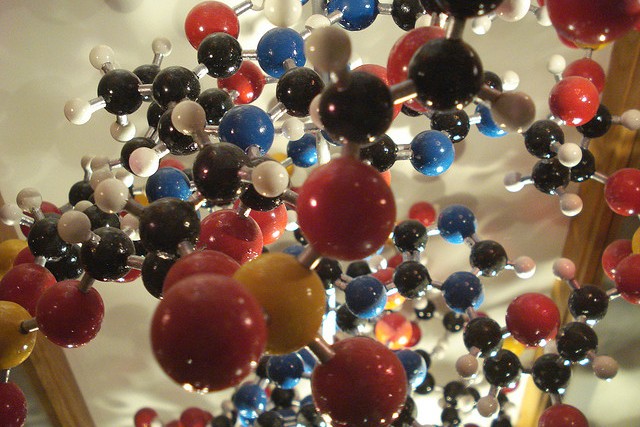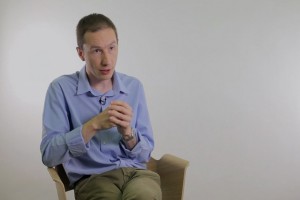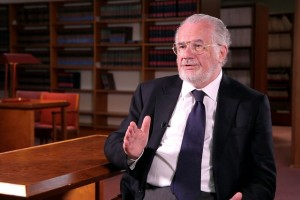Quantizing Gravity
Theoretical physicist Xavier Bekaert on quantum interaction, coupling constant, and properties of gravity

The proton is the smallest of the atomic nuclei, yet it has a surprisingly “large” presence in the molecular sciences, these being physics, chemistry, and biology, where it plays a fundamental role in many important processes. This makes the proton one of the most studied of the stable, natural particles.
Emerging clean energy technologies such as fuel cells also rely on pH regulation, and in particular, in the ability to move protons from one place to another. In a hydrogen fuel cell, for example, the fuel is decomposed at one of the electrodes (the ‘anode’), and the electrons are used to produce an electric current. What remains of the decomposed fuel is protons, which cannot be allowed to build up at the anode. Rather, these are transported from the anode to a second electrode (the ‘cathode’), where they are combined with oxygen to produce water, which is the waste product. The transport of these protons is, therefore, key to keeping the cell running. The proton transport process is usually carried out via some medium that is capable of absorbing the protons chemically at the anode and delivering them efficiently to the cathode. This medium is known as a “proton conductor”, and some examples of excellent proton conductors are water and phosphoric acid, often combined with a polymer of some kind to create a “morphology” that directs the protons along short paths through narrow channels that extend between the two electrodes.
My group has been very active in using theoretical and computational approaches to understand better the proton transport process through various proton conducting media using a technique known as “first principles” molecular dynamics. Generally, in a molecular dynamics calculation, one solves the Newtonian equations of motion for a system numerically in order to generate the atomistic dynamics of a complex system. Such calculations provide for us a window into the microscopic world and allow us to see exactly how protons are transported in complex environments. The key input into a molecular dynamics calculation is the interatomic forces that are used to drive the motion, since, according to Newton’s second law, these forces produce the individual particle accelerations that move them around the system. In a first-principles calculation, we do not assume any particular models for these forces but rather allow them to be generated from the rules of quantum mechanics, in particular, from the distribution of electrons in the system. This way of computing the forces provides an accurate description of chemical bond-breaking and forming, which occurs frequently when protons are transported and which cannot be treated reliably by any other approach. However, a shortcoming of this approach is the assumption of the validity of classical nuclear motion. Protons are the lightest of the atomic nuclei, and therefore, their motion is strongly influenced by quantum mechanics. These effects can be incorporated into first-principles molecular dynamics framework through an approach due to Richard Feynman (known as the Feynman path integral), which provides a prescription to use the molecular dynamics scheme to sample the full quantum-mechanical thermal spatial distribution and approximate condensed-phase quantum dynamics.
Let us now turn to the mechanism of excess proton transport in water. In a water molecule, the two hydrogens carry a slight positive charge, while the oxygen atom carries a negative charge equal, in magnitude, to twice that of the hydrogens. This charge separation causes a weak, directional interaction between water molecules in which a hydrogen of one water is attracted to the oxygen of another. This interaction is called a hydrogen bond. Our calculations show that an excess proton in water attaches itself to a water molecule, giving rise to a water molecule with an extra proton charge, which we call an H3O+ or hydronium ion. These three protons are chemically equivalent and participate in equivalent hydrogen bonds to three neighboring water molecules. Passage of one of the protons from the hydronium to another occurs through a hydrogen bond. The receiving water molecule now has an excess proton attached to it, for a total of three attached protons, and it can pass one of its protons to a neighboring water molecule. However, it need not be the same proton that it originally received. In fact, two out of three times, it is a different proton! What determines which of the three protons is transferred to a neighboring water molecule is the number of hydrogen bonds surrounding this potential proton acceptor. Normally, a water molecule donates two hydrogen bonds through the two hydrogens and accepts two hydrogen bonds through the oxygen end. The overall coordination pattern is tetrahedral. However, on average, these hydrogen bonds remain intact for roughly 1-2 picoseconds (a picosecond is one-trillionth of a second). If one of these hydrogen bonds ruptures, then the water molecules is left with just three neighbors, and if the lost hydrogen bond is one of the hydrogen bonds accepted by the molecule, then the topology is like that of a hydronium ion. In this reduced coordination state, the water molecule easily takes up the proton from the neighboring hydronium ion. We call this process “structural diffusion” because it is not a particular proton that is being transported but rather the hydronium ion that migrates through the network of hydrogen bonds via a series of proton transfer reactions. Each proton transfer reaction changes the chemical identify of the hydronium ion (the core oxygen in H3O+ constantly changes after each proton transfer). In phosphoric acid, which contrasts sharply with water, structural diffusion is a highly concerted process that is correlated over clusters of hydrogen bonds. Each proton conducting medium exhibits a different microscopic proton transport mechanism, however, there are some common underlying principles involving the precise hydrogen bonding pattern that must exist around a proton-receiving species before the proton transfer can occur. More importantly, we can connect precise microscopic proton transport mechanisms with experimental observables, such as diffusivities, proton conductivity, and proton transfer rates, that can also be calculated using the molecular dynamics trajectories.
The proton is a truly fascinating particle, not just in high-energy particle physics but, as the above shows, also in chemistry, materials science, and biology. Its ability to be transported in novel ways, not just in liquids, but also in solids and, as was shown in 2014, through single layers of carbon atoms known as graphene sheets, make it one of the most studied particles in nature. We are still learning about its fundamental role in biology and how to exploit and control it in many areas of chemistry and materials design. As we do, we will certainly be able to create new, unforeseen roles for this tiny but important object.

Theoretical physicist Xavier Bekaert on quantum interaction, coupling constant, and properties of gravity

Tufts University professor, Angelo Azzi, on recent and historical discoveries surrounding vitamin E, problems ...

New research attempts to resolve the debate about water's structure